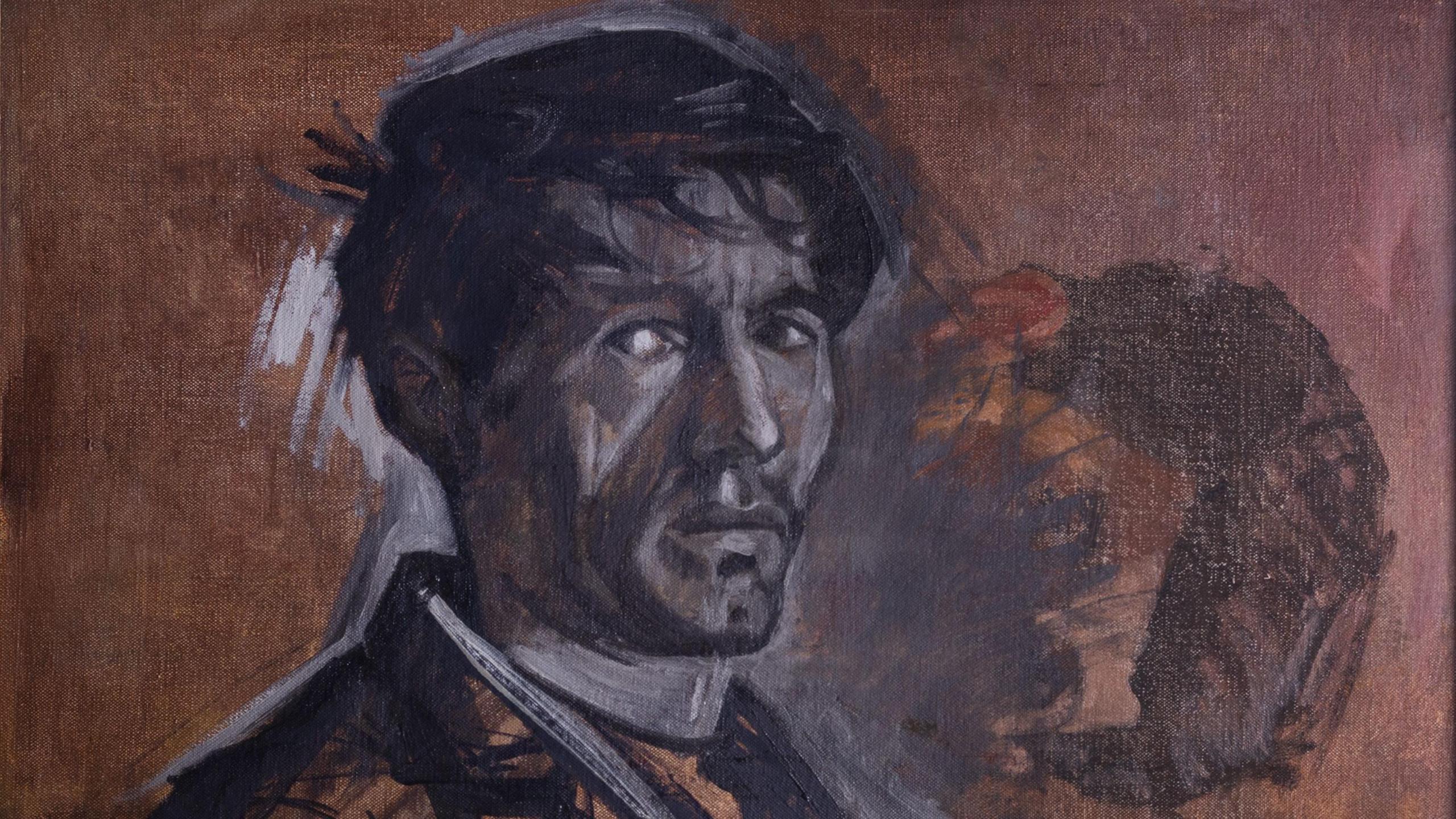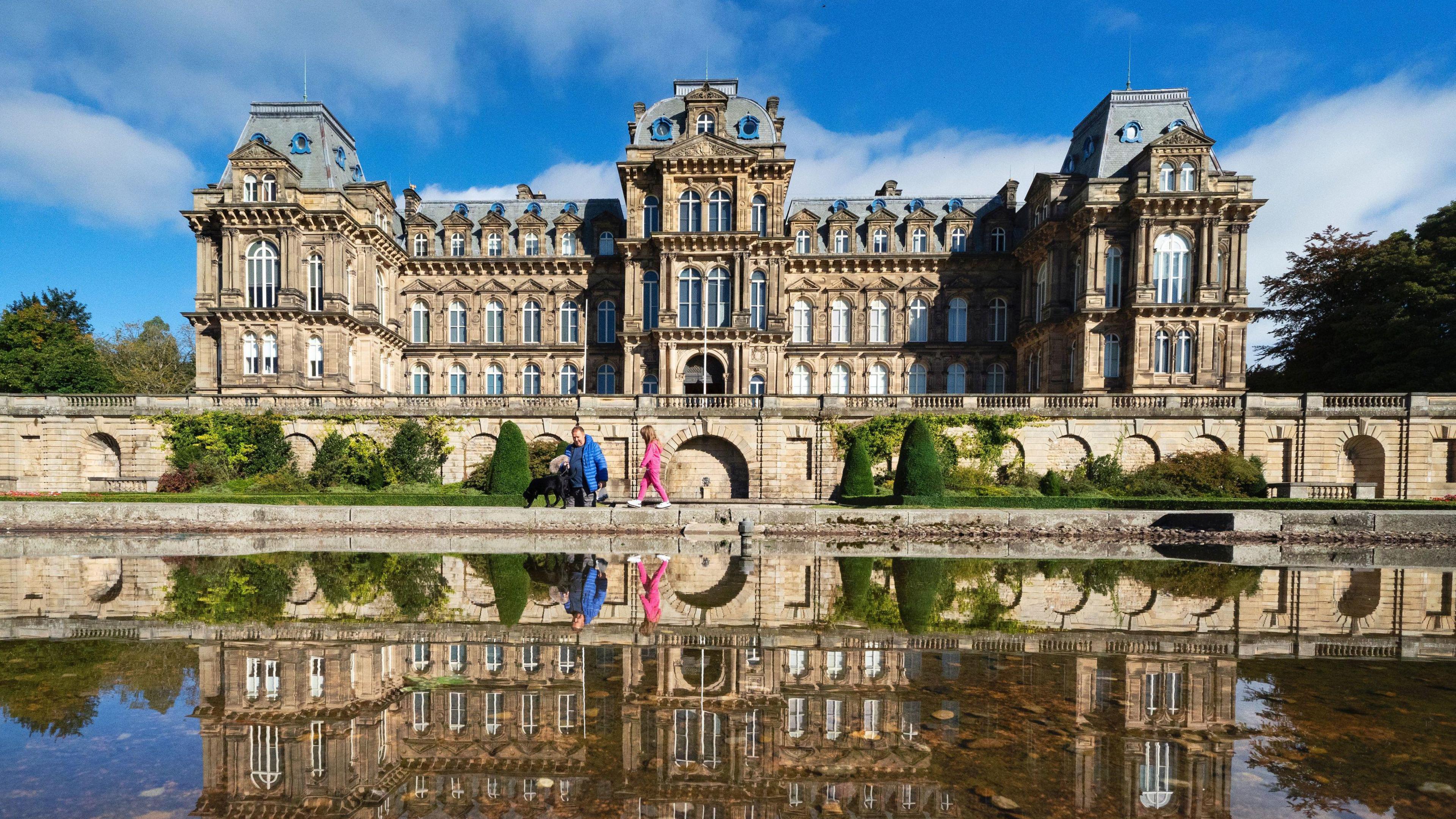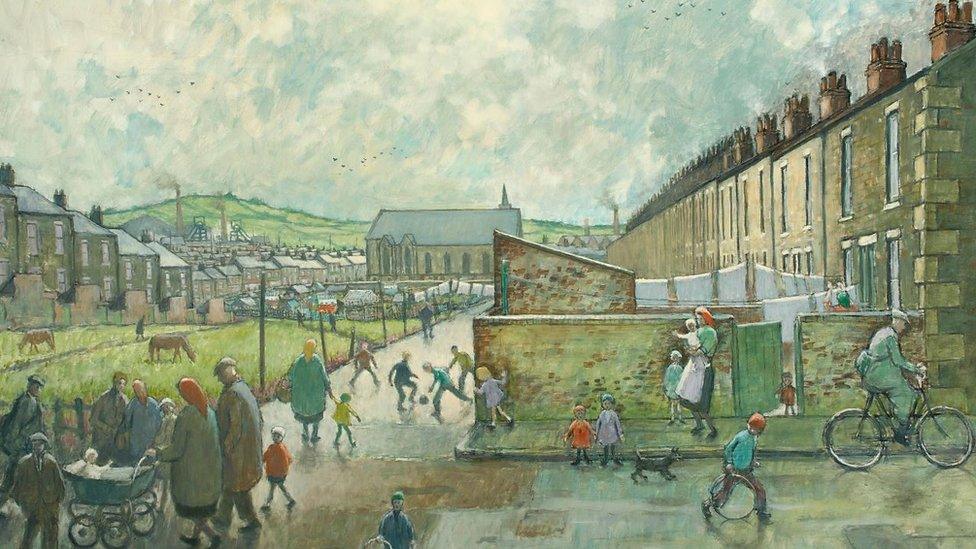Norman Cornish portrait found in back of painting

The previously unseen self-portrait was discovered during renovation work at the Bowes Museum
- Published
A newly discovered self-portrait of a coal miner turned prolific artist is being displayed at an exhibition.
Norman Cornish, from Spennymoor, County Durham, was known as the last of the "Pitman painters", who created artwork depicting everyday life.
A previously unseen self-portrait was discovered when conservators at the Bowes Museum in County Durham removed the back board of another one of his paintings.
The sketch has become part of a exhibition there called "Kith and Kinship", which explores life in the north as depicted by Cornish and LS Lowry.
Cornish spent 33 years working in mines before forging a career as an artist.
The Bowes Museum’s conservator Jon Old, described the discovery as "magical".
The new painting was uncovered during conservation work to Cornish’s painting "Bar Scene", and shows the artist in his younger days.
Mr Old said: "The painting had a back board set into its stretcher that appeared to be resting on the back of the painting, which I thought was unusual.
"So, I decided to remove the board to see if it was affecting the painting, and to my surprise it revealed this wonderful other painting on the reverse, which was quite magical."
It is not known where the painting fits in the wider chronology of Cornish’s works, but it becomes the 29th known self-portrait by Cornish and will be displayed facing the other self-portraits in the exhibition, museum curators said.

The exhibition "Kith and Kinship: Norman Cornish and LS Lowry" has opened at the Bowes Museum
More than 50 paintings, drawings and sketches by artists Norman Cornish and LS Lowry will be showcased at The Bowes Museum until January 2025.
Vicky Sturrs, director of programmes and collections at The Bowes Museum, said both artists were "extraordinary storytellers of their time".
"Cornish and Lowry had a beautiful way of capturing everyday scenes associated with the north, but our exhibition will also showcase a different side of the region that is perhaps unexpected, which we hope visitors will really enjoy."
LS Lowry was born in Manchester, but frequently took breaks from his work as a rent collector to visit Berwick-upon-Tweed and Sunderland to paint, and noted that the north-east of England was what he had "always been looking for", museum curators said.
Follow BBC North East on X (formerly Twitter), external, Facebook, external and Instagram, external. Send your story ideas to northeastandcumbria@bbc.co.uk
Related topics
More stories from BBC North East and Cumbria
- Published16 February 2020

- Published5 August 2011
- Published2 August 2014